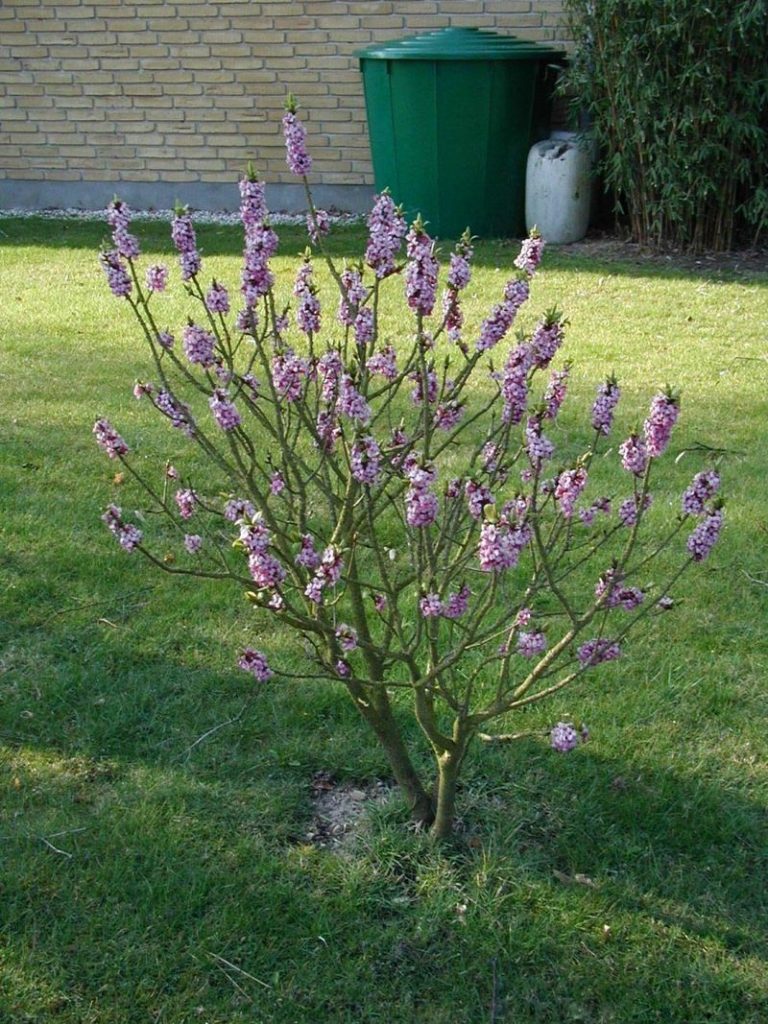
Also known as February daphne, spurge laurel or spurge olive, this deciduous shrub is native to limestone soils in mixed woodlands of most of Europe and western Asia, north to northern Scandinavia and Russia. It was introduced to North America in colonial times and has become weedy in some areas. It is a member of the Thymelaeaceae, a plant family of just under 900 species, most of which are unfamiliar to North American gardeners. Photo Credit Sten Porse Wikimedia Commons
Description: The plant grows up to 5′ tall and has brown woody branching stems that carry oblanceolate, gray-green leaves on short stalks. The leaves are 1-3″ long, and arranged spirally on the stems. The 4-lobed small flowers appear in clusters in early spring before the leaves emerge. They are very fragrant and have a pink or light purple perianth. The fruit is a round bright red berry that is eaten by birds but is very poisonous to humans.
Poisonous Properties: All parts of the plant are highly toxic to humans if ingested, especially the fruit and bark. Several toxic compounds are present in the sap of the plant including a dihydroxycoumarin glycoside, daphnin, a diterpene alcohol, daphnetoxin, and diterpene ester, mezerein. Ingestion of twigs or berries causes blistering of the lips, mouth and throat with salivation, thirst and difficulty swallowing. Nausea, vomiting, bloody diarrhea, weakness, and headaches may follow. Delirium, seizures, coma, and death may result in severe cases. As little as 12 berries can cause death in adults, while just a few berries can cause death in young children. Daphne is also toxic to small animals such as cats and dogs, but not birds. External contact with the sap can cause skin irritation, rash or ulceration.